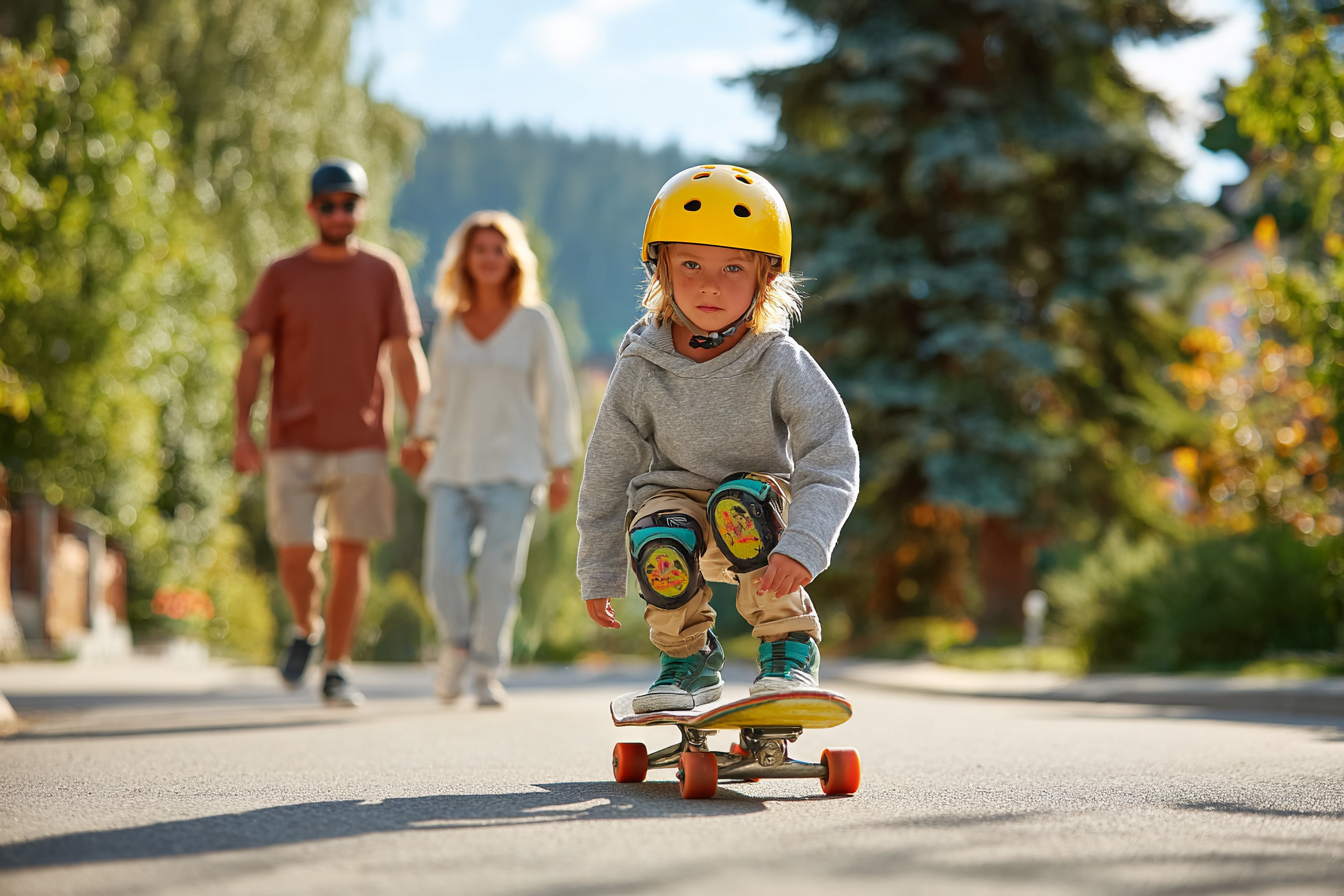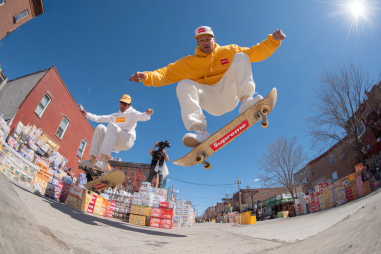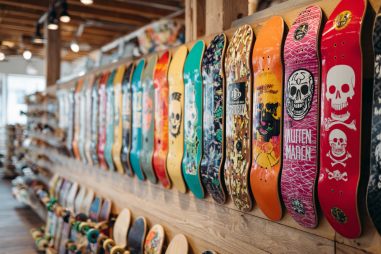Skateboarding is an exciting and dynamic sport that kids can enjoy at any age. It’s not only a fun way to stay active but also an excellent means for children to develop balance, coordination, and confidence. Starting skateboarding might seem daunting for beginners, especially for kids, but with the right approach and safety measures, it can become a rewarding and safe hobby. This guide provides essential beginner tips to help parents and kids embark on their skateboarding journey safely and confidently.
Why Skateboarding is Great for Kids
Skateboarding offers more than just thrills; it’s a fantastic physical activity that helps children develop crucial motor skills and build strength. The challenge of learning new tricks and mastering control over the board fosters perseverance and patience. Additionally, skateboarding encourages creativity and self-expression, as kids learn to maneuver their boards in unique ways. It also helps boost confidence as they see their progress over time. Beyond individual benefits, skateboarding can be a social activity, allowing kids to meet friends, share tips, and develop a sense of community at local skate parks.
Essential Safety Gear for Young Skaters
Safety should always be the number one priority when children start skateboarding. Proper protective gear minimizes the risk of injuries and helps kids feel secure as they learn. Here is a list of essential safety equipment:
- Helmet: A properly fitting skateboarding helmet is vital to protect the head from serious injury.
- Wrist guards: These help prevent wrist fractures and sprains from falls.
- Knee pads: Knee pads shield the knees during tumbles and help reduce bruising.
- Elbow pads: Elbow protection is important, especially when kids are learning to stop and fall safely.
- Proper footwear: Skate shoes with grippy soles and good ankle support improve board control and foot stability.
Ensuring that all gear fits well and is worn consistently will help children stay safe and develop good habits from the very beginning.
Choosing the Right Skateboard for Beginners
Choosing the right skateboard is key to a child’s skateboarding success and enjoyment. For beginners, it’s important to select a board that fits their size and skill level. Here are a few tips for picking the right skateboard:
- Deck size: Younger kids typically do well with smaller decks that are 7.5 to 8 inches wide, providing better control and easier maneuverability.
- Board type: A standard street skateboard with a durable wooden deck is ideal for most beginners.
- Quality components: Choose a skateboard with reliable trucks, wheels, and bearings to ensure smooth rides and long-lasting durability.
- Pre-assembled vs. custom: Many beginner boards come pre-assembled and are great for getting started quickly, but parents can also build custom boards tailored to their child’s preferences.
Visiting a specialty skate shop can be helpful for trying out different boards and getting expert advice.
Basic Skateboarding Techniques to Learn First
Once the equipment is ready, it’s time to start learning the fundamental techniques. For kids new to skateboarding, mastering these basics first will build a strong foundation:
- Stance: Determine whether the child is regular (left foot forward) or goofy (right foot forward) by trying a few test pushes.
- Pushing off: Teach the child how to push off evenly and gain a smooth forward momentum.
- Stopping safely: Learning to foot brake, where the back foot gently touches the ground to slow down, is essential of stopping safely.
- Turning and carving: Show how to lean into turns and shift weight to carve gently and control the board’s direction.
- Falling safely: It’s important to practice falling techniques, such as rolling on impact, to reduce the chance of serious injury.
Practicing Balance and Coordination Exercises
Balance and coordination are critical skills for skateboarding success. Practicing these outside of the board helps kids improve faster and feel more confident. Recommended exercises include:
- Balance board training: Using a balance board off the skateboard can mimic the motion and improve stability.
- Standing on one leg: Simple exercises like standing or hopping on one leg develop proprioception and ankle strength.
- Core strengthening: Activities that engage the core, such as planks or yoga poses, improve overall control on the skateboard.
- Coordination drills: Games or activities involving hand-eye and foot coordination can translate to better board control.
These exercises should be fun and age-appropriate, encouraging kids to develop their abilities naturally.
Supervised Practice Areas and Skate Parks for Kids
Finding safe and suitable practice locations is an important part of skateboarding for kids. Look for areas that offer:
- Flat, smooth surfaces: Great for beginners to practice pushing, stopping, and turning without obstacles.
- Designated beginner areas: Many skate parks have sections designed for younger or less experienced skaters.
- Supervised environments: Parks where experienced instructors or adult supervisors are present ensure guidance and safety.
- Community programs: Local skate schools or clubs often offer classes, workshops, and group sessions tailored for kids.
Always accompany younger children during outdoor practice to provide support and intervene if necessary.
Encouraging Progress and Celebrating Milestones
Keeping kids motivated is essential for their continued enjoyment of skateboarding. Celebrate their progress and small wins to build enthusiasm and confidence:
- Recognize milestones such as mastering a turn or a controlled stop.
- Encourage setting small, achievable goals on each practice session.
- Offer positive reinforcement and gentle correction rather than criticism.
- Share videos or photos of their skateboarding moments to create a sense of accomplishment.
- Join or organize group skating sessions for social fun and support.
This positive reinforcement helps kids feel proud and excited to continue learning and improving.
Common Beginner Mistakes and How to Avoid Them
Everyone makes mistakes when learning, but some common skating errors can be minimized with proper guidance:
- Lack of safety gear: Skipping helmets or pads increases injury risk; always gear up.
- Poor stance and foot placement: Improper stance can lead to loss of balance; encourage trying both stances early.
- Trying advanced tricks too soon: Encourage mastering basics before jumping into complicated maneuvers.
- Ignoring surface conditions: Rough or wet surfaces increase falls; pick appropriate practice spots.
- Fatigue without breaks: Tired kids are more likely to fall; make sure to take rest breaks and stay hydrated.
Understanding and avoiding these pitfalls helps foster safe, steady improvement.
Building a Positive Skateboarding Habit
Establishing skateboarding as a healthy, enjoyable habit can have positive lifelong effects on kids. Encourage regular practice balanced with fun and relaxation, and ensure the sport stays a positive outlet rather than a source of frustration. Celebrate the progress, stay patient during setbacks, and watch as your young skater gains physical skills, mental resilience, and a lifelong love for the sport.







